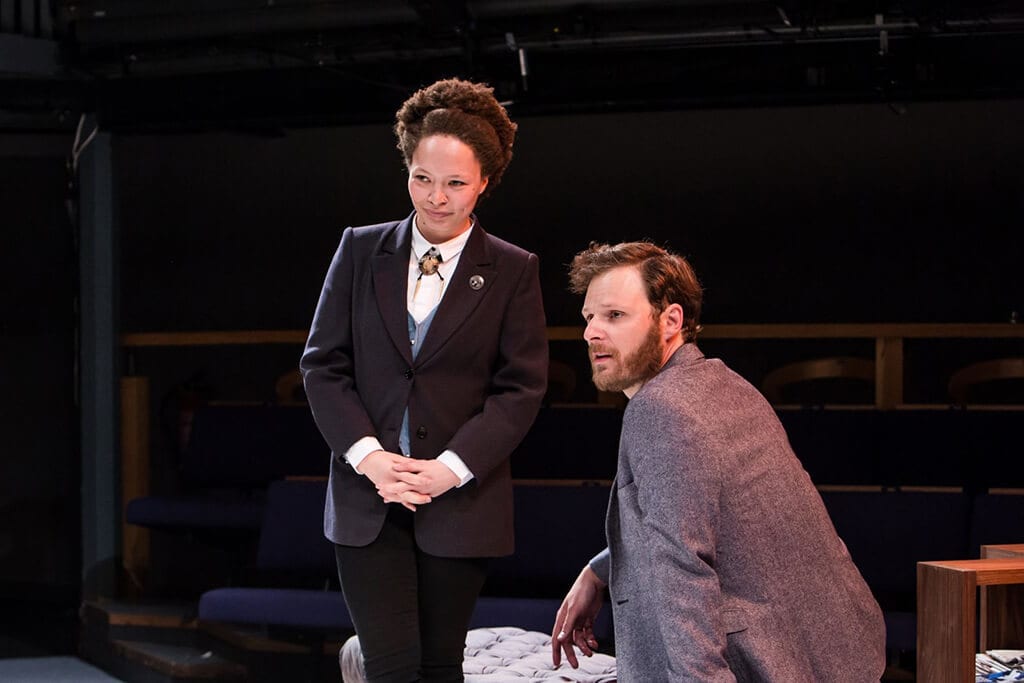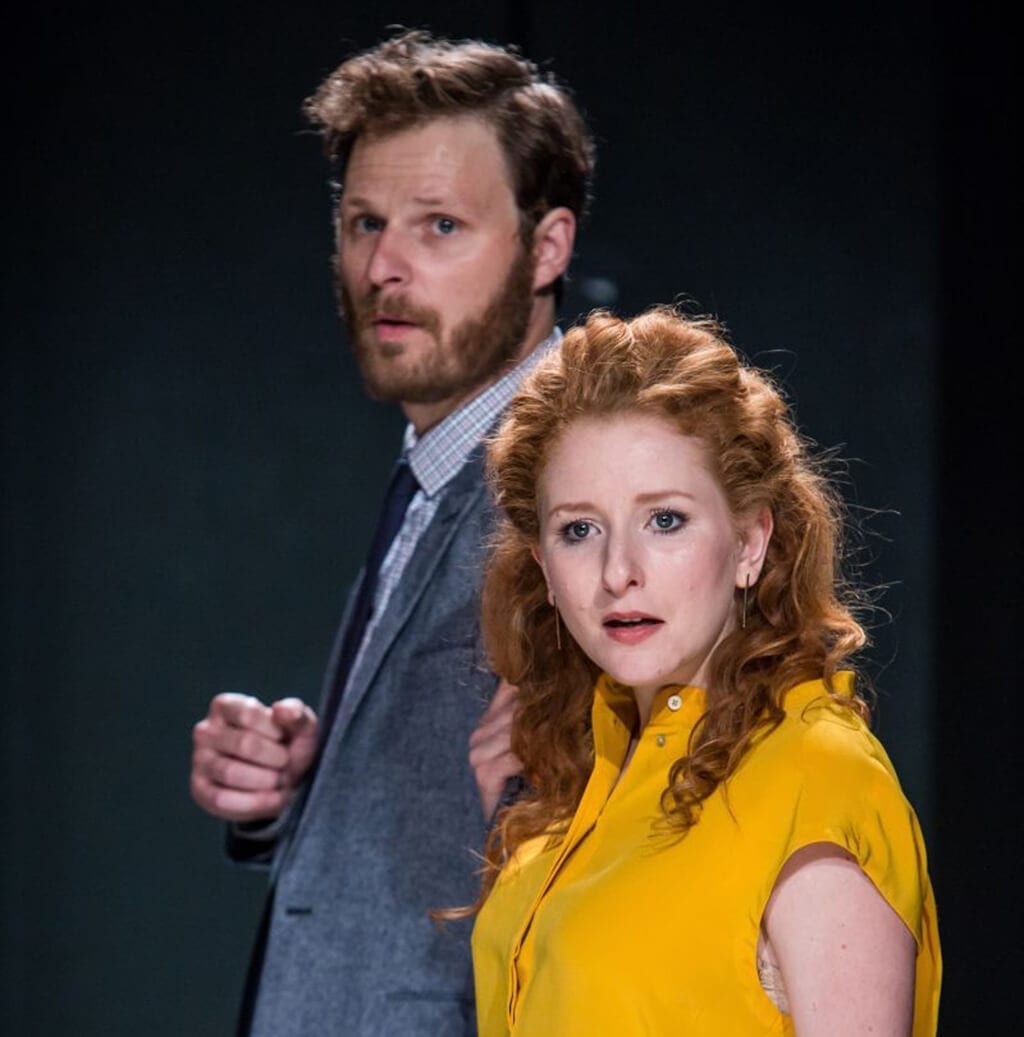The Philanderer was Shaw’s second completed play, its first version having been written in 1893, following the first performances of Widowers’ Houses. At that stage the third and final act had divorce as its main theme. This may well have appeared distinctly louche at the time; in any case, a friend advised him to replace it. This he did with a treatment of relationships during a period of turmoil, which turns the play into a guide to making the best of a bad job.
To some extent these changes seem to indicate a wish to hang onto the play’s greatest strengths, which lie in its comic treatment of situation and dialogue, while simultaneously preserving a highish level of basic seriousness.
Even these changes, however, have not turned this into a play that approaches Shaw at his seriocomic best.
Clearly Paul Miller thought long and hard about what to do before coming up with what turns out to be a deft solution. He uses both versions of the final act.
This works better than you might expect, but when we compare The Philanderer with Shaw’s best known plays we are may feel that this one lacks any obviously leading character and that the message of the play, if it has one, is that everybody is in a bit of a muddle, not least those who occasionally become temporarily domineering.
But being in a bit of a muddle does not on the whole make them complex. And when, as happens with most of them, they reach the point of pulling themselves together, they do so with some reluctance and are very happy when someone else’s confused outburst on some issue of behaviour or attitude to events allows them to exclaim ‘Why didn’t you say so before?’ and get back to asserting their own individual attitude to the matters in hand.
I rather expect that if I were to see this play again in two or three weeks, it will have changed considerably. All of these actors are capable of finding whatever depth there is to be found in their part and playing to that without the show turning into a ‘Look at me, of, look at me, oh, look at me I’m acting!’
One other difficulty I found, lay in the costumes. They left me feeling at times that some of them had wandered into the 1950s. Paul Miller puts this rather differently. ‘I wanted to free the play from the dusty straightjacket of Victoriana and give it a setting as fresh, alive and as mischievous as the writing itself. I hope by liberating it from chocolate box décor we can listen to the language afresh. Shaw upended theatrical stuffiness and hide-bound conventions: this production honours that impulse.’
However, I don’t wish to make the play sound anything but greatly enjoyable. The evening is typical of the Orange Tree in that we are led to feel very strongly that actors and audience are occupying one space. We may be permanently sitting down and not moving about, but we are part of the show just the same. We can move, emotionally and dramatically, with them.
But I think that what I will remember most of about this play is the hilarity which gripped the audience so very frequently and so enjoyably.




